 “To bring about destruction by overcrowding, mass starvation, anarchy, and the destruction of our most cherished values—there is no need to do anything. We need only do nothing except what comes naturally—and breed.” (Isaac Asimov)
“To bring about destruction by overcrowding, mass starvation, anarchy, and the destruction of our most cherished values—there is no need to do anything. We need only do nothing except what comes naturally—and breed.” (Isaac Asimov)
Environmentalists have been often accused of being prophets of doom. Now there is a new species of Catastrophists: they are political and economic commentators with a pervasive lament that the world faces exponential population decline, with a “Global Aging Crisis” that threatens to “stunt” economic growth.
Phillip Longman of the New America Foundation writes that current population trends also threaten to make military actions increasingly difficult for most nations. Pensions and health care will require increased funding. As the labour force stops growing, it will become more difficult for Washington to sustain current levels of military spending or the number of men and women in uniform.
Many commentators are concerned, more or less openly, with national or international prestige, not just economic, but military. It is not just about pensions; at stake is the decline of national prestige and of capitalism, which as rule have always flourished with population growth.
Governments, media, industries and business in general have switched from their previous 1970s preoccupation with uncontrolled population growth, to focus on the consequences of unplanned Western population decline. They fear the asymmetrical proportions of an ageing population in the developed world against the youthful force of Asian nations of the new coming world. The decline of the West is seen as tantamount to decay and loss of relevance on the international stage. It is the tragedy of Western extinction. Competition about power has got a new name: Fertility.
The Canadian political analyst Mark Steyn asserts that the West is in danger of extinction. “We’re pretty much awash in resources, but we’re running out of people, the one truly indispensable resource, without which none of the others matter.” In the face of his preoccupation with the ‘demise of Western civilization’, Steyn ignores questions about the abundance of every other resource.
Since the United Nations downgraded its assumption of global population projections, from 10 billion to slightly under 9 billion by 2050, the press have reacted as if Earth were on a fatal collision course with a giant asteroid. They have created panic among the Old Cornucopians and anyone else who believes that population growth is ‘No Problem’.
However, they shouldn’t worry, because, according to these predictions, population growth is still on course to add, by 2050, a new population nearly the current size of India, or almost five times the size of sub-Saharan Africa. The trouble is, the growth will be mostly in developing countries, in places where women average six or more children (Afghanistan, Angola, Burundi, the Democratic Republic of Congo, East Timor, Guinea-Bissau, Liberia and Somalia) and those where they average five or more (Congo, Ivory Coast, Eritrea, Guinea, Nigeria, the Palestinian territories, Sudan and Togo). India is projected to overtake China’s population by 55%, while Indonesia is expected to increase its population by 30% and Vietnam by 40%. And if Turkey joins the EU, with a projected increase of 30 million, it will count as the Union’s most populous member.
Different projection models, seen by some as pessimistic, and by others as optimistic - conclude that there is an 85 per cent chance that the world’s population will stop growing before the end of the century. There is a 60 per cent probability that it will not exceed 10 billion people before 2100, and around a 15% probability that, at the end of the century, Earth’s population will be lower than it is today. For different regions, the date and size of peak population will vary considerably. At the global level, old age will prevail: the proportion above age 60 is likely to increase from its current level of 10 per cent to around 22 per cent in 2050.
If trends were to be borne out, by 2050 the cohort aged 65 to 84 years old would reach 1.3 billion, while those aged 88 and over would number 175 million.
These projected numbers are feared likely to impose a destructive burden on society. Hence, for some, the prospect of an end to world population growth is welcome news for sustainable development. (Lutz,Sanderson,Scherbov)
The pessimistic view of a population decline depends on absolute faith in the benefits of population growth. The new breed of pessimists is the antithesis of the Old Cornucopians and a new mutation. Their literature is studded with references to the perils of ageing.
“Economists in the West have declared that it will be impossible to sustain the present system of old age pensions.” (Mullan). “The United Nations duly convened in October 2000, a group of experts to examine issues of population aging and decline, the twin most dreaded consequences of humanity’s biological success.”
Such fear is not new. As early as 1937, John Maynard Keynes assured us that the problem of overpopulation is old hat and in its place we have a different threat: lack of demand caused by a declining population. The nationalistic content of such preoccupations was reflected in the thinking of many and endorsed by the Royal Commission which reported in 1949 the danger of a steady fall in birth-rates from 1870 (Mullan).
The European Union (EU) has an ambivalent attitude: while promoting population control policies in the developing world, it would look stupid, not to say racist, in denouncing the danger of falling birth rates in the West.
For some commentators this worry is part of a more generalised alarmism, which touches every aspect of modern society: food scares, water depletion, climate changes, family crisis, terrorism, social fragmentation, immigration, AIDS, bird flu, civil and uncivil wars, football violence, unruly teenagers, destruction of forests, and so on, some of which are suspected to have been promoted by environmentalists in search of a visible platform.
The lack of growth produces a stationary society especially if older people are excluded from the labour market. The trend has become a cause for angst, paradoxically transforming the old image of the demographic “bomb” out of recognition. No more explosions, but implosion. “An older industrial world will inevitably be a slower growing one.” (Hamish McRae)
The author offers an interpretation for the existence of the New Catastrophists. Their insistence on gloom mongering is manipulative and follows deliberate ideological ends, the ideology of eternal Growth: The Golden Calf.
The ideology underlying the population growth model is inspired by Adam Smith, mercantilist/imperialist economics, and modern demand and supply theories. (A. David Coleman)
As life expectancy has increased in the entire Western world, it has been associated with longer and healthier life spans in the older population. A 60 year old today is not the same 60 years old of twenty years ago. As a result, people can either work longer or consume less.
Ah! Consuming less! This concept is anathema for the disciples of the New Dogma—the Growth Factor. No society today, rich or poor, of left or right government, will oppose this dogma, which has become a quasi-religious belief system. It follows that economic growth cannot do without population growth.
Among supporters of population growth, the late Julian Simon is the most extreme case. He advocated continued population growth long into the future, deserving Professor Albert Bartlett’s award of membership in “The New Flat Earth Society” because a flat earth is the only earth that has the potential to allow the human population to grow forever.
“We have in our hands now - actually in our libraries - the technology to feed, clothe, and supply energy to an ever-growing population for the next 7 billion years… Even if no new knowledge were ever gained...we would be able to go on increasing our population forever.” (Julian Simon)
How has this self-confidence in progress and everlasting human improvement, founded on growth, given way to gloomy predictions about the future?
Again, the word on which we should concentrate is “growth”. No population growth = no economic growth. It is simple. The faith of the Cornucopians in a radiant future is based on growing growth. To anticipate lower economic expectations, resulting from less people to feed, clothe, house, educate, mobilize, and serve in the army - even if this includes unemployment, crowding, pollution, cementification, and social conflict - goes against the conventional assumption that human inventiveness doesn’t accept biological limits and is the motor of progress.
The over-optimistic view that purports humanity’s capacity to overcome every difficulty, with time, technology and lots of human beings, has turned on its head, when confronted with the awful perspective of a diminishing population.
If humans are so deft in inventing new solutions to ever increasing problems, what then stands in the way of creating new solutions to the economic affliction of demographic decline, publicised by the press and governments as the ultimate tragic event?
Surely, the same race that has sent man to the Moon - an incredibly difficult task previously thought to belong to the realm of science fiction - can manage changes arising from the so-called demographic transition?
We are being instructed to believe that the problem is economic. Ecological concerns are not a priority, nor are related issues of resource depletion, energy availability, loss of biodiversity, plunder of our natural capital. The fact that many species are in danger of extinction is not a major concern, nor that natural beauty is disappearing under tons of concrete. Though it is undeniable that the density of human populations is responsible for environmental devastation, it is also evident that not everybody is concerned. Our governments obey the economist exhortations and rightly recognise that people are mostly interested in what is called “purchasing power”.
If people were better informed about the threat to their lifestyles they would take into consideration other factors: Peak Oil is already upon us and its scarcity is already affecting their purchasing power. And if they were to reflect further, they should recognise that a less populated world would have everything to gain in security, democracy, liberty, employment, resources availability, and so on.
A report released on Sunday, February 19th by the English Institute for Public Policy Research (IPPR) the leading New Labour think-tank, claimed that Britain was at a “demographic fork in the road” and needed to increase its fertility to prevent future tax rises.
The answer ? “The IPPR report says, in effect, that we need more babies to pay for our pensioners but this ignores the fact that those babies will eventually become pensioners themselves,” said David Nicholson-Lord, research associate for the Optimum Population Trust. “When that happens, we will need - on the IPPR’s logic, at least - even more babies to support the even greater number of pensioners. Population would thus have to go on increasing ad infinitum - something the planet clearly cannot support.” (David Nicholson Lord)
Behold an Editorial from The Economist of January 7th 2006, the smartest most influential magazine in the world,” according to The Sunday Telegraph
“The new demographics that are causing populations to age and to shrink are something to celebrate. Humanity was once caught in the trap of high fertility and high mortality. Now it has escaped into the freedom of low fertility and low mortality. Women’s control over the number of children they have is an unqualified good, as is the average person’s enjoyment, in rich countries, of ten more years of life than they had in 1960. Politicians may fear the decline of their nations’ economic prowess, but people should celebrate the new demographics as heralding a golden age.”
Notwithstanding the congratulating tone of this article, about the happy consequences of the lengthening of life, due to a limitation of births, the general reaction is of dismay and hand wringing. Some reactions are obsessively concentrating on a narrow issue. It is called: pension funds, or the preoccupation of providing funding to a growing number of older people.
Nobody seems to be able to find a solution, in spite of the proclaimed inventiveness of the human race.
According to certain UN figures “The ‘population bomb’ is now, officially, a dud…. The Population Division of the UN has now published a report titled ‘Replacement Migration: Is it a Solution to Declining and Aging Populations?’ that claims to address a problem population doomsayers did not predict: that within 50 years many countries around the world will be suffering from underpopulation. The report explicitly states, ‘Among the demographic trends revealed by those figures [generated], two are particularly salient: population decline and population aging.’ The report predicts that by 2050, Japan’s population will have dropped by 18 percent, Italy’s by 28 percent, and Europe as a whole by 13 percent,” according to Joseph Klesney a policy analyst at the Acton Institute.
The UN Population Division continues to worry: if the United States hopes to maintain the current ratio of workers to retirees over time, it will have to absorb an average of 10.8 million immigrants annually through 2050. At that point, however, the U.S. population would total 1.1 billion, 73 percent of whom would be immigrants who had arrived in this country since 1995 or their descendants.
Just housing such a massive influx would require the equivalent of building another New York City every 10 months. (Longman)
Europe is also deemed to need mass immigration to fix the support ratio between workers and pensioners. Britain, for example, is recommended to take a million immigrants a year to 2050, just to maintain the balance, which would bring the population to 120 millions…
Some European countries try to ignite more pro-natalist propaganda.
In extremis, some demographers recommend more immigration, in order to pay for our pensions.
But this is a theme for another, more ad hoc article.
Feeding reciprocally these up-down fears of economic decline = population decline, one of the most active and fundamentalist proponents of population growth is Ben J. Wattenberg, Fellow of the American Enterprise Institute, a conservative institution supported by Big Business. And it is not strange that Big Business should support a rise in population, even through immigration, as businesses depend on a growth of their customer base. Just think how depopulation would play in favour of the construction industry.
Wattenberg “believes in the dire economic and emotional repercussions consequent to the “birth dearth”: shrinking markets, wrenching economic dislocation and great personal costs for millions of young people who decide not to raise families. (Wattenberg)
He then puts his foot in it, by bringing in scenarios of the Black Death, to support his theories. While recommending not investing in Europe, he compares our situation to “that plague demography, losing about a fifth of its population by 2050 ”.
Back in 1348, Europe suffered the Black Death or Plague, the second worst catastrophe in recorded history, which reduced the estimated European population by about a third.
It also brought stability, progress and freedom from want to the people who escaped death. As the distinguished scholar David Herlihy pointed out, the great reduction in population created opportunities for the survivors and those who came after them; there were fewer people, more jobs and a higher standard of living. (David Herlihy and Samuel K., Jr. Cohn)
Another historian agrees that, before the Black Death the continent “was caught in a Malthusian deadlock” in which “the balance between people and resources had become very tight.” After the plague, Europe “emerged from the charnel house of pestilence and epidemic cleansed and renewed, like the sun after rain.”(John Kelly)
Moreover: “Serfdom declined more rapidly. The status of women rose. Wages rose for common people. Talented young people were able to advance faster. The power of the kings declined more rapidly.” (Norman Cantor ) It is an indisputable fact that the sudden population decline stimulated labour-saving technologies that transformed the economy.
It would be nice if future population decline were not the result of tragic circumstances, but rather the consequence of many factors, all signs of progress in medicine, economic progress and cultural deliverance from old customs.
The writer John Seager, currently writing a book on the effects of population trends around the world, asks: “Is this so-called ‘birth dearth,’ as Wattenberg puts it, really a problem? It is not. In fact, smaller families represent a great potential opportunity. The world is beset with social, political, and environmental challenges and crises;many caused by rampant population growth.” (John Seager)
Most invectives against population growth come not from straight environmentalists but from scientists:
“If there is ever a time of plenty, this very fact will automatically lead to an increase in population until the natural state of starvation and misery restored.” says the biologist Richard Dawkins,
and:
“It is a simple logical truth that, short of mass emigration into space, with rockets taking off at the rate of several million per second, uncontrolled birth-rates are bound to lead to horribly increased death-rates. It is hard to believe that this simple truth is not understood by those leaders who forbid their followers to use effective contraceptive methods. They express a preference for ‘natural’ methods of population limitation, and a natural method is exactly what they are going to get. It is called starvation.” Richard Dawkins
Most environmentalists appear less concerned with overpopulation. They concentrate on poverty, global warming, human rights, and many other ecological and sociological fears, but they shy away from overpopulation, which is the underlying reason for these problems. They may fear to lose many of their supporters, who believe that the real problem lies elsewhere, mostly in overconsumption by the rich.
Dr Madsen Pirie, President, Adam Smith Institute, said it: Do not worry: you said it all. We will get over this hump of population decline, go through the difficulties and come out the other side, happier and with better living conditions. The benefits of any given situation depend on good policies. (News night’s David Grossman Aug 2003 BBC)
Exponential growth cannot go on eternally and more so population growth plus economic growth.
As noted by The Economist, higher life expectancy goes hand in hand with better health, and better health may improve worker productivity and savings, and puts pressure to introduce new technologies to boost workers’ efficiency.
Policymakers should focus on the advantages of the median income on a per capita basis, which would make more individuals better off, rather than on the gross national product or national income.
If Governments hate a shrinking population is because it restricts their power status, but what matters is GDP per person.
A slowly shrinking population will bring a more egalitarian society, lower unemployment, elimination of costly and obsolete infrastructures, a stimulus to economic modernization, like the use of robots as substitute for menial labour, and improved living standards.
Although, realistically speaking, we recognize that every economic regime has its problems, population growth seems to have accumulated more than enough: they include increased import dependency for food and raw materials, increases in housing costs, congestion and crowding, marginal population ignored and exploited, balance of payments problems, inhibition of productivity growth and real income, an abundance of young people of working age, which can result in unemployment or underemployment, accompanied by political instability, elevated rates of crime, and the deterioration of social capital as a possible further consequence.
The “greying” of developed nations will provide opportunities as well as challenges. The real crux of the population question is the quality of people’s lives; the ability of people to participate in what it means to be really human; to work, play and die with dignity; to have some sense that one’s life has meaning and is connected with other people’s lives.” (Cohen, J.)
Let’s be optimistic for a change and look forward to our old age, when we will all be wiser, reasonably healthy and still active in contributing to society.
What better challenge for Cornucopians? So why not apply the famously sceptical environmentalist Bjorn Lomborg’s cheerfulness as medicine: emphasise the possibilities of technology and human creativity! (“The fact is human ingenuity has conquered every problem so far.”). I didn’t include him in my review because he is an unreconstructed optimist, the True Original Cornucopian. Because he thinks that everything is just a management problem, we shall call on him to fix things whenever they get a bit too difficult.
Dear Cornucopians who have lost their sense of reliance on technological fixes and market forces, consider that even Wattenberg and Co will come up with some extraordinary solution to our new predicament, new technological advances, and man’s creativity will rush to the rescue in a world of sprightly octogenarians, with the added benefit of living in a cleaner, peaceful and greener environment. And with a New Cornucopian suit fitted to their leaner new frame, we can celebrate together the Age of Increasing Opportunities.
References:
1. Phillip Longman, May/June 2004,The Global Baby Bust”, Foreign Affairs. In “The Empty Cradle: How Falling Birthrates Threaten World prosperity and What to do About it” New York Basic Books, 2004, he urges that policies in the USA and other rich countries encourage more children.
2. Wolfgang Lutz, Warren Sanderson &amo; Sergei Scherbov, 2 August 2001” The end of world population growth”, NATURE vol. 412www.nature.com 543 27. Sunderland, Massachusetts.
3. Phil Mullan,2002 “The Imaginary Time Bomb” I.B. Taurus Publishers, theorises that Ageism is a form of discrimination
4. Hamish McRae 1995, OECD Economic Outlook.
5. A.David Coleman 2006, The prospect of population decline, University of Oxford, Round table discussion on the economic financial and environmental implications of over-population, OPT London 15 Feb
6. (Julian Simon L.) 1995, “The State of Humanity” Cato Institute and Blackwell Publishers.
7. David Nicholson Lord, 2006, Optimum Population Trust, News Release: Baby Shortage A Myth
8. Ben J. Wattenberg “The Birth Dearth” New York: Pharos Books.
9. Ben J. Wattenberg, 1997 “The Population Explosion Is Over”
10. The New York Times Magazine
11. David Herlihy and Samuel K., Jr. Cohn , 1997,” The Black Death and the Transformation of the West” (European History Series), Kirkus Associates,Harvard University Press , Cambridge Massachusetts)
12. John Kelly 1002, “The Great Mortality : An Intimate History of the Black Death, the Most Devastating Plague of All Time “ Harper Collins Publishers,10 East 53rd Street , NewYork )
13. Norman Cantor 2001,”In the Wake of the Plague: The Black Death and the World It Made “, New York Free Press.
14. John Seager 2004, Why Anxiety Over Low Fertility? Population Connection, (Fact Sheet From The Reporter)
15. Cohen J. ,1998,” How many people can the earth support? “New York Review of Books.
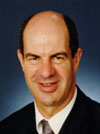

 This remark from Cameron Smith, reviewing the updated version of "Limits to Growth" is the one that most needs emphasis, I believe:
This remark from Cameron Smith, reviewing the updated version of "Limits to Growth" is the one that most needs emphasis, I believe:



 “To bring about destruction by overcrowding, mass starvation, anarchy, and the destruction of our most cherished values—there is no need to do anything. We need only do nothing except what comes naturally—and breed.” (Isaac Asimov)
“To bring about destruction by overcrowding, mass starvation, anarchy, and the destruction of our most cherished values—there is no need to do anything. We need only do nothing except what comes naturally—and breed.” (Isaac Asimov)  We need look no further than New South Wales and the Wollongong scandal for confirmation that money can buy governments and decisions, particularly planning decisions. Yet NSW has an Independent Commission Against Corruption [ICAC], something we don't have in Victoria.
We need look no further than New South Wales and the Wollongong scandal for confirmation that money can buy governments and decisions, particularly planning decisions. Yet NSW has an Independent Commission Against Corruption [ICAC], something we don't have in Victoria.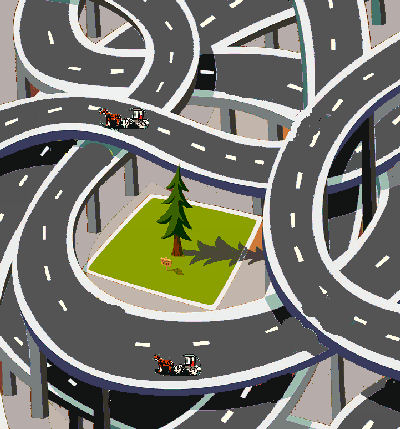
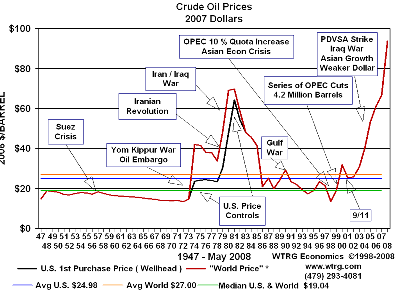
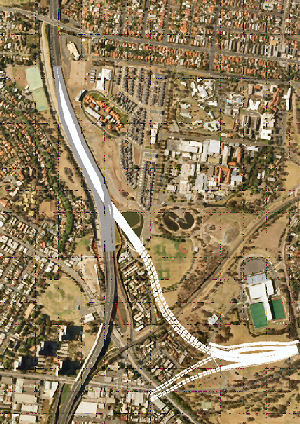


 In an effort to silence residents with difficult questions, Western Australia's Cockburn Council routinely limits question time and threatens residents who defy these limits with AU$1,000 fines. The Mayor, Stephen Lee, is now on extended leave after the Crime Commission had found him guilty of misconduct for having accepted an undeclared election campaign donation of AU$43,000 from the Singapore-controlled developer
In an effort to silence residents with difficult questions, Western Australia's Cockburn Council routinely limits question time and threatens residents who defy these limits with AU$1,000 fines. The Mayor, Stephen Lee, is now on extended leave after the Crime Commission had found him guilty of misconduct for having accepted an undeclared election campaign donation of AU$43,000 from the Singapore-controlled developer 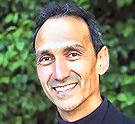
 For his political courage in speaking out against undemocratic, but mainstream media and government endorsed, growth, actor, Geoffrey Rush deserves particular historic recognition from Australians. He launched a new website: Marvellous Melbourne at https://marvellousmelbourne.org. Candobetter.net editor 12 January 2017: Unfortunately, eight years later it is no longer maintained, so we have removed the link. Candobetter.net remains one of its memorials. However the problem those optimistic protesters set out to solve has grown every year into a behemoth that threatens many of our institutions and certainly our way of life, all over Australia.
For his political courage in speaking out against undemocratic, but mainstream media and government endorsed, growth, actor, Geoffrey Rush deserves particular historic recognition from Australians. He launched a new website: Marvellous Melbourne at https://marvellousmelbourne.org. Candobetter.net editor 12 January 2017: Unfortunately, eight years later it is no longer maintained, so we have removed the link. Candobetter.net remains one of its memorials. However the problem those optimistic protesters set out to solve has grown every year into a behemoth that threatens many of our institutions and certainly our way of life, all over Australia. 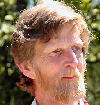
 One of the biggest dilemmas for environmental realists is striking the right balance between the potential infringement of human rights required to power down to a more sustainable society on one hand, and the inevitable threat to human rights if we don't take action now. Let's call this the human rights dilemma. One solution is simply to deny the relevance of the coming environmental collapse by idealising a variant form of cornucopia, believing everything would be okay if we just wrested power from the corporate-military elite and brought about a new world order founded on the principles of liberty, fraternity and egalitarianism, extending the ideals of the French revolution to all 6.5 billion citizens alive today and making room for the 9 billion plus expected to grace our humble planet by 2050. Wouldn't it be wonderful if billions more could enjoy the North American way of life with sprawling verdant suburbs, neat bungalows with double garages and private swimming pools populated by shiny happy citizens. Sadly such a reality is just a fantasy promoted by soap operas, incessant but often subtle advertising and peer pressure, but it's the ideal to which billions of our fellow world citizens aspire. The endless, but usually fruitless, pursuit of consumertopia is, as amply documented in Oliver James' excellent book Affluenza, the cause of much distress. Many teenagers in affluent countries acquire a deep sense of inferiority because they lack the kind of consumer gadgets as their peers have or because they fail to emulate the cooldom and aesthetic perfection of media role models. Worse still the exponential rise in aggregate consumption by our species is ultimately suicidal, not just for indviduals but the vast majority of our fellow human beings. When nature begins to take its course, with its periodic natural distasters affecting ever greater numbers of people, you can bet the poorest and most vulnerable will always be the first to go.
One of the biggest dilemmas for environmental realists is striking the right balance between the potential infringement of human rights required to power down to a more sustainable society on one hand, and the inevitable threat to human rights if we don't take action now. Let's call this the human rights dilemma. One solution is simply to deny the relevance of the coming environmental collapse by idealising a variant form of cornucopia, believing everything would be okay if we just wrested power from the corporate-military elite and brought about a new world order founded on the principles of liberty, fraternity and egalitarianism, extending the ideals of the French revolution to all 6.5 billion citizens alive today and making room for the 9 billion plus expected to grace our humble planet by 2050. Wouldn't it be wonderful if billions more could enjoy the North American way of life with sprawling verdant suburbs, neat bungalows with double garages and private swimming pools populated by shiny happy citizens. Sadly such a reality is just a fantasy promoted by soap operas, incessant but often subtle advertising and peer pressure, but it's the ideal to which billions of our fellow world citizens aspire. The endless, but usually fruitless, pursuit of consumertopia is, as amply documented in Oliver James' excellent book Affluenza, the cause of much distress. Many teenagers in affluent countries acquire a deep sense of inferiority because they lack the kind of consumer gadgets as their peers have or because they fail to emulate the cooldom and aesthetic perfection of media role models. Worse still the exponential rise in aggregate consumption by our species is ultimately suicidal, not just for indviduals but the vast majority of our fellow human beings. When nature begins to take its course, with its periodic natural distasters affecting ever greater numbers of people, you can bet the poorest and most vulnerable will always be the first to go. Word is that Melbourne is getting its 1 million more ten years early and that the Vic Government is in a panic because it has no idea how many permanent new guests have taken up its foolhardy invitations to come and stay. Who the hell is responsible?
Word is that Melbourne is getting its 1 million more ten years early and that the Vic Government is in a panic because it has no idea how many permanent new guests have taken up its foolhardy invitations to come and stay. Who the hell is responsible?


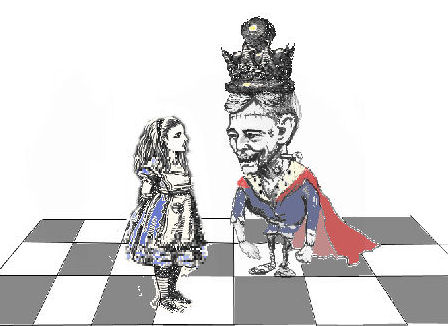
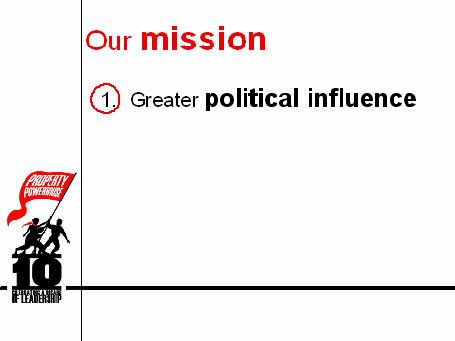
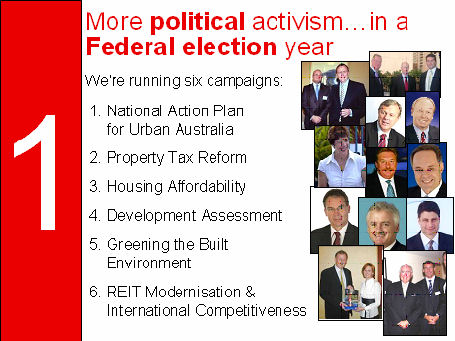
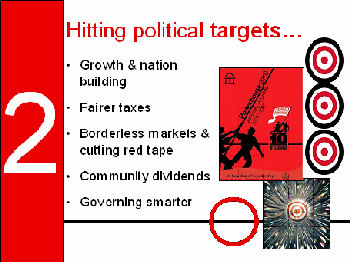


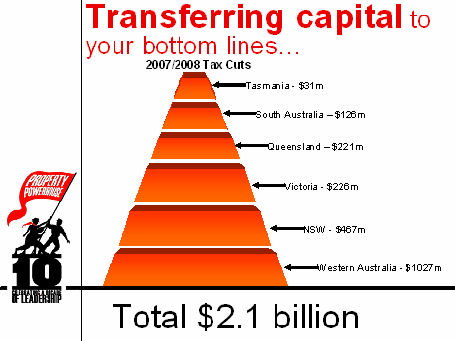




 The University of Western Australia wants to bulldoze rare bushland in the middle of our city for future property development. The Minister for the Environment David Templeman is soon to make his decision on whether 60% of this pristine 36 hectare bushland will be destroyed to make way for offices and housing.
The University of Western Australia wants to bulldoze rare bushland in the middle of our city for future property development. The Minister for the Environment David Templeman is soon to make his decision on whether 60% of this pristine 36 hectare bushland will be destroyed to make way for offices and housing.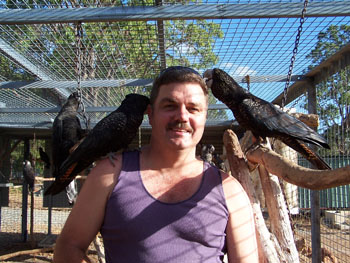
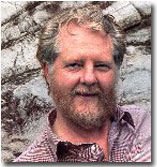

Recent comments